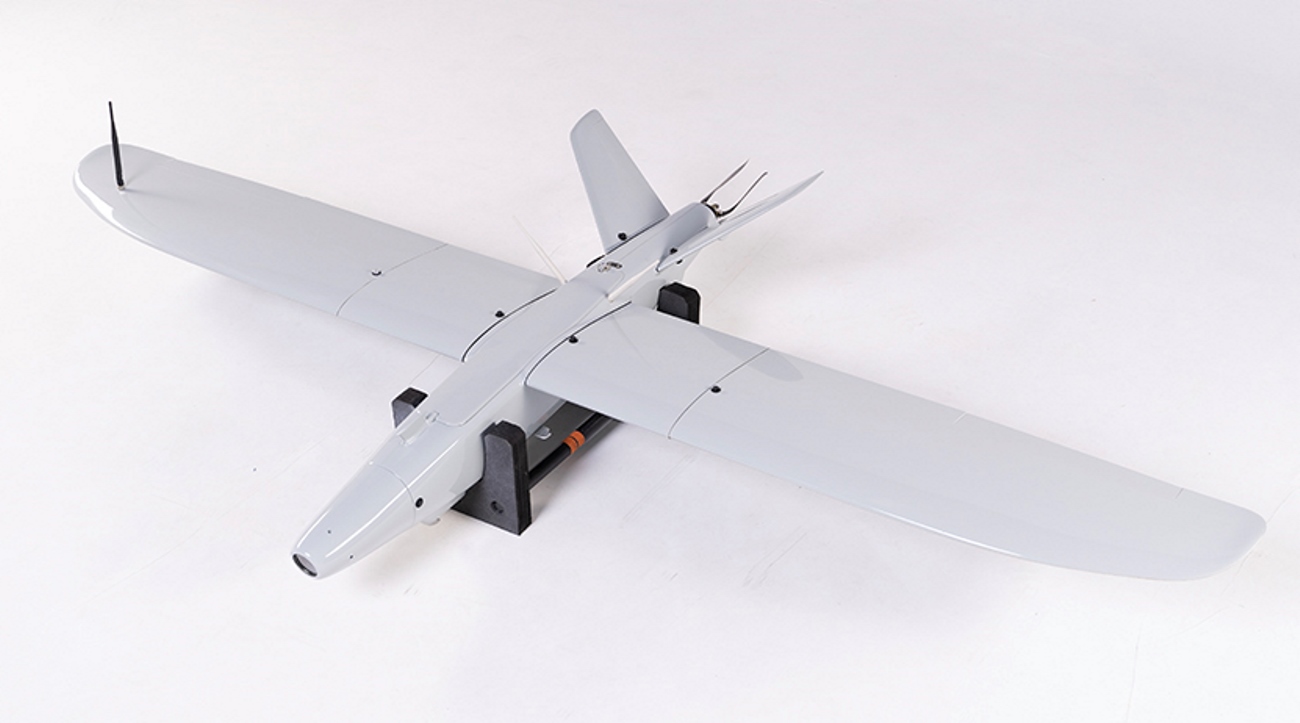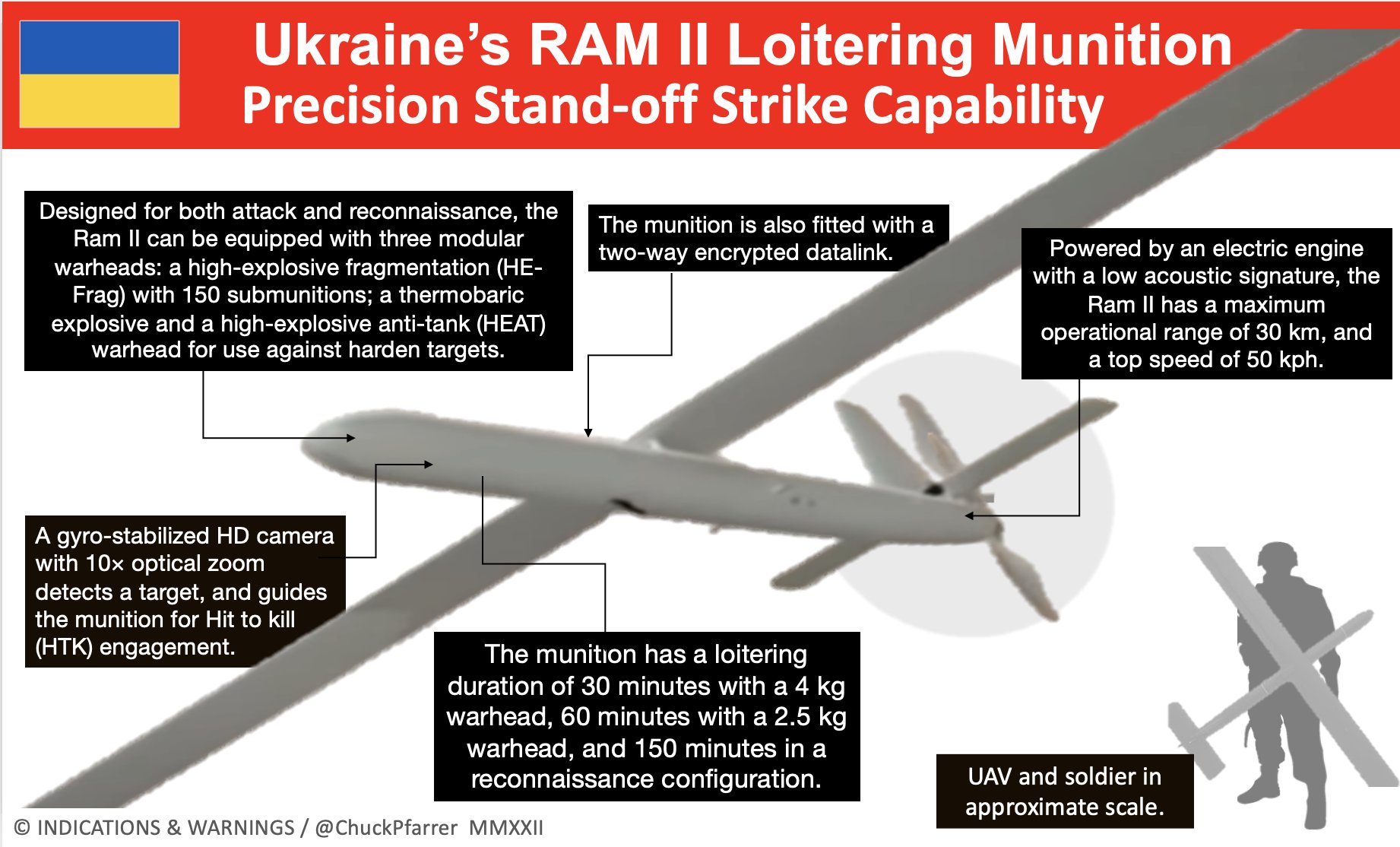Defense companies from Russia and Ukraine are showcasing their military hardware, including the infamous loitering munitions, at IDEX 2023 as the Ukrainian war enters its second year.
The catch, however, is that both Russian and Ukrainian corporations are ironically displaying their weaponry close to one another at the IDEX and NAVDEX exhibitions for the first time since Russia’s invasion of Ukraine.
The Russian presence in a separate pavilion included more than seven manufacturers, each displaying a broad range of military products. One of these was the ZALA KYB loitering munition, made by the ZALA Group and is being displayed at the show for the first time.
Moscow has extensively deployed its indigenously developed loitering munitions (primarily by ZALA) and imported kamikaze drones to destroy Ukraine’s civilian infrastructure and power grids. The use of these loitering munitions has been labeled as a war crime by NATO allies.
Even though Russia’s homegrown ZALA loitering munitions have hogged a lot of limelight in the ongoing conflict, Ukraine’s indigenous loitering munitions have not received comparable attention in the war.
More than deploying specially designed loitering munitions, Kyiv has focused on modifying archaic Soviet-era drones like the Tu-141 Strizh, allegedly to carry out suicide missions inside Russia. Ukrainian inventory also consists of US-supplied Switchblade and Phoenix Ghost loitering munitions besides Turkish Bayraktar drones.
It is, thus, pertinent to mention here that Ukraine is showcasing its locally developed RAM-II loitering munition at the IDEX. Based on the Leleka-100 drone used by the Ukrainian Armed Forces, the RAM-II loitering munition was displayed by Ukrainian drone manufacturer Ukrspecsystems.

With several European countries declaring their intention to buy some or field their own, loitering munitions have become much more visible and widespread among Western users owing to their central role in Ukraine.
The war has also been keenly watched for the combat performances of these systems, something that both countries can bank on for marketing their equipment. According to reports, the RAM-II has been deployed throughout the combat, with some visuals on social media cited as evidence.
What Do We Know About Ukraine’s RAM-II?
RAM II UAS is a high-precision combat loitering unmanned aerial system. When deployed in an urban setting, it is intended to carry out precise, effective attacks on opposing units while minimizing collateral damage. T
his drone has a gyro-stabilized Full HD camera and a 10x optical zoom for simple target recognition.
It has a length of 10 meters, a wingspan of 2,584 meters, a payload capacity of three kilograms, and a cruising speed of 70 kilometers per hour. The maximum take-off weight of RAM II is 9.8 kilograms, and it can reach a maximum height of 1,000 meters.
The key component of this drone is an active visual target tracking system, which enables locking on the target using live video from the onboard camera and following the target up to contact. These UAVs are launched into the sky using a special catapult, which can be installed on an armored vehicle.
The RAM-II contains the “Terminal” software, which enables it to sync with command and control (C2) systems used by the Ukrainian Military Forces. This is another intriguing feature. Also, the high degree of automation eliminates human error and permits using the drone in a “swarm attack” or a single attack.

The RAM II UAV incorporates an encrypted data link, a silent electric engine, and a low-noise signature to maximize mission security. It is a fully loaded combat UAV that carries a three-kilogram warhead and can operate in a range of 30 kilometers from the launch point. It can complete both surveillance and combat mission.
The warhead that the RAM-II drone can carry includes thermobaric, which is designed to hit buildings and small armored vehicles; high Explosive Anti Tank (HEAT), which is intended to hit heavily fortified targets at land or sea; and Heat Explosive/Fragmentation, which is designed to destroy open personal targets.
If affected by jamming systems, the drone returns to the base by itself and lands with a parachute. The deployment of this system takes up to 10 minutes and can be operated from inside the vehicle or in a safe position.
????Южное направление, украинские военные при помощи дрона-камикадзе RAM II поражают российский ЗРК «Оса». pic.twitter.com/89n1gsGQDS
— Вячаслау Сiкора (@SIKORA_slava) October 10, 2022
The drone has been deployed in the ongoing conflict against Russia. Previous reports indicated that the drone hit the Russian Osa anti-aircraft missile system in the Kherson region. Further, Ukrainian volunteers went so far as to crowdfund the purchase of this loitering munition for the Ukrainian Army.
“Within a day, together with you, we collected UAH 352 million into mine and Serhiy Prytula’s bank accounts. Of these funds, we will purchase 50 (this is the maximum amount to purchase) RAM IIs with ground stations worth 100 million hryvnias,” said Serhii Sternenko, a Ukrainian social activist.
Displaying the RAM II at IDEX 2023 would, thus, allow Ukraine to showcase its local military capability when it is fighting a prolonged war with assistance from the NATO allies.
- Contact the author at sakshi.tiwari9555 (at) gmail.com
- Follow EurAsian Times on Google News




